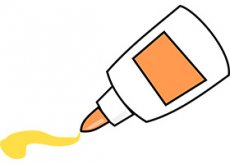New publications
New healing adhesive heals wounds within a minute
Last reviewed: 02.07.2025

All iLive content is medically reviewed or fact checked to ensure as much factual accuracy as possible.
We have strict sourcing guidelines and only link to reputable media sites, academic research institutions and, whenever possible, medically peer reviewed studies. Note that the numbers in parentheses ([1], [2], etc.) are clickable links to these studies.
If you feel that any of our content is inaccurate, out-of-date, or otherwise questionable, please select it and press Ctrl + Enter.

Scientists have created a special glue that can glue the edges of a wound, thereby significantly accelerating the healing process.
The medical surgical adhesive MeTro has increased elasticity and instantly fills the wound: thus, there is no need for stitches, including postoperative ones. The new glue will help to rebuild the entire mechanism of surgical intervention.
Tests of the created drug were conducted under the supervision of specialists representing the Australian University of Sydney.
The adhesive consists mainly of proteins, which, under the influence of ultraviolet radiation, are transformed into an elastic and very strong material. When such a material is introduced into the wound cavity, the adhesive components hermetically glue the tissues within the first minute. Subsequently, the biological mass gradually dissolves, restoring the integrity of the damaged area.
Experts suggest that over time, the new adhesive will make it possible to abandon the use of stitches and surgical staples made of metal - the invariable attributes of any surgical intervention. Among other things, the glue will definitely become indispensable in providing emergency medical care to patients with injuries.
The MeTro adhesive mass turned out to be very elastic, so its consistency is optimal for connecting damaged tissues in areas with constant movement - for example, in the lungs, heart muscle, blood vessels. In addition, the product is convenient to use for healing tissues located in hard-to-reach places.
An additional unique characteristic of the adhesive is that you can "set" in advance the duration of the period of its absorption in tissues, because the body needs different time to heal a wound. For example, the material can be absorbed within a few hours or several months.
Specialists have already conducted test trials of the drug in animals with injuries to lung tissue, internal organs, and damage to arterial vessels. Laboratory pigs were used as experimental animals, and the tests themselves were more than successful.
Scientists say that the structural features of the affected tissues and the addition of infection largely determine the quality and speed of recovery. Poorly structured and functionally differentiated tissues (for example, the brain, parenchyma) are poorly regenerated, unlike connective tissue and integumentary epithelium.
The quality and speed of wound healing depend on both local intra-wound conditions and the general condition of the body. Moreover, the influence of local conditions - the size of the damage, its degree, the presence of dead tissue, the presence of pathogenic microorganisms, the location of the wound area, the state of blood circulation and trophism - can be largely neutralized using a new wound-healing glue.
The results of the tests of the innovative drug were published on the pages of Science Translational Medicine and on the website http://stm.sciencemag.org/.

 [
[